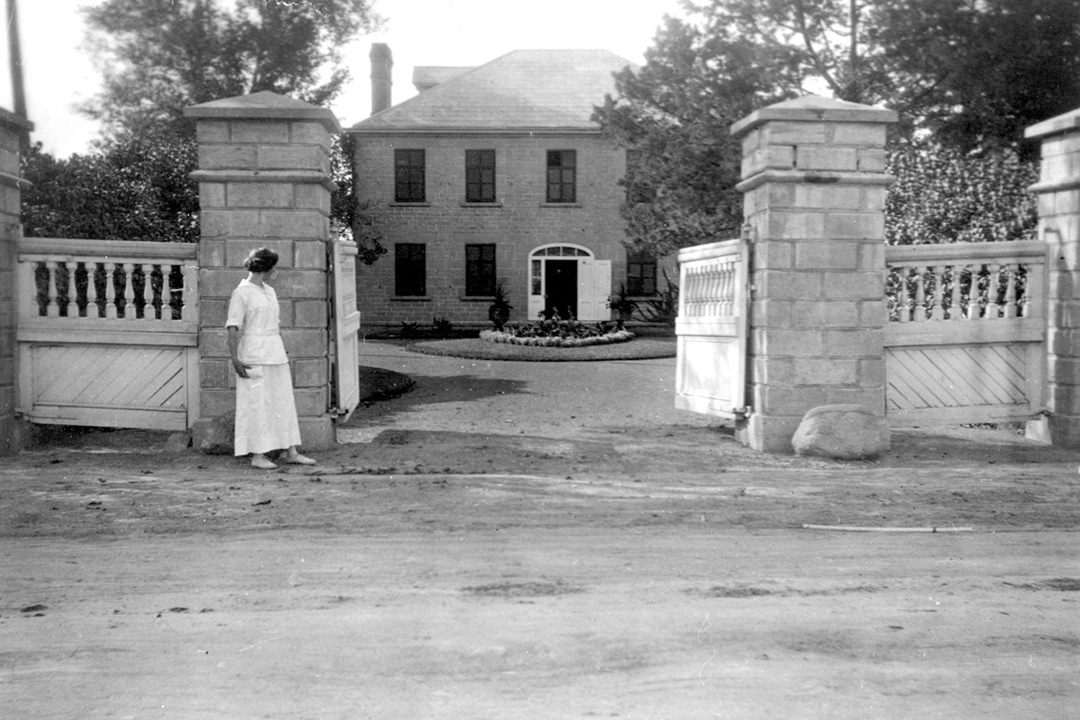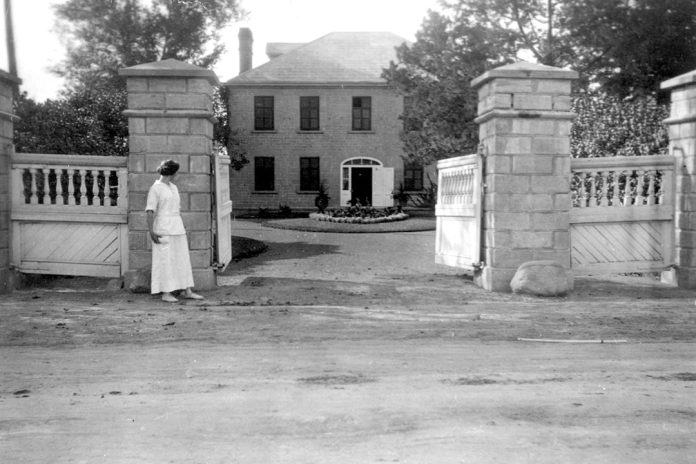By Dave Allston –
For a column titled “Early Days,” what better subject than to go back in time and take a look at Kitchissippi’s very earliest days and its first residents, the Thomson family. Nearly 200 years after their arrival, they are still recognized as builders and long-time farmers of the Maplelawn estate and gardens, the marquee heritage property in the ward.
William Thomson and his son John arrived in Quebec City aboard the Agincourt on August 8, 1817 after a 28-day journey from their home in Scotland. They arrived in Bytown soon afterwards, aboard a boat with other key Nepean pioneers, docking at Richmond Landing below the Chaudière Falls.
They had little money and big aspirations for a new life in Upper Canada. Land in Upper Canada was available to immigrant settlers if they fulfilled specific settlement duties. Thanks to surviving records of the Perth Military Settlement, we know the Thomsons first settled on their land in Westboro on February 9, 1818. They had just one neighbour (the Honeywells, to the west), and Richmond Road was barely a cleared path at the time.
The Thomsons settled on 200 acres of Nepean Township lot 29, a tall rectangular parcel of land that stretched from what we now know as Carling Avenue to the Ottawa River, between Golden and Denbury Avenue.
Williams’s wife and the rest of their children (two sons and six daughters) arrived soon afterwards. They constructed a log cabin and began to farm the land, which was less than ideal. The property was described as a “second or third rate farm” in which “the Thomsons had to remove boulders for fences and drains, and level down hills and fill hollows.”
In July 1822, after successfully performing the terms of their settlement, the Thomsons were officially granted ownership of the property. Their farm would eventually be recognized as one of the finest in the Ottawa Valley and a model for other immigrants.
The property was originally named Teviot Grove (likely after a river in Scotland near their original home), later Maple Grove, and finally, Maplelawn.

In 1831, the Thomsons began work on their grand stone house. William’s friendship with Lt-Col John By ensured many of By’s top men assisted the project once the Rideau Canal was completed. The limestone and timber used in its construction were sourced directly from the farm property. Both the stone fence and the house – which is considered one of the finest examples of Georgian architecture in Canada today – remain a symbol of the Thomson family’s early prosperity and a memorial to expert and meticulous craftsmanship. William Thomson Sr. died in December of 1833, around the time of its completion.
His sons, William Jr. and John, also became major players in the early days of the square timber and lumber industry in the Ottawa Valley. Their success allowed them to further re-invest into the growth of their farm. They were also involved in local politics. At the first council of the District of Dalhousie in 1842 at Bytown, John represented Nepean. William Jr.’s son John would also later serve as Deputy-Reeve of Nepean Township from 1874-1888.
Over the years, the Thomsons acquired even more land in Kitchissippi, eventually owning over 700 acres. William farmed the Maplelawn property, while John farmed the western extension. In the early 1850s, another stone mansion was constructed (likely by John shortly before his death), which still exists today. It’s known as the McKellar-Bingham house.
Their brother Andrew opened a store at the corner Richmond and Britannia Roads, and later on Rideau Street. He married Mehitabel Parker, daughter of Harvey Parker, one of the first settlers of the Ottawa area, and later became a preacher in Smith’s Falls.
Their sister Janet married James Aylen, son of the shiner and lumberman Peter Aylen, and had a son William Thomas Aylen, who later managed the Thomson’s affairs.
The Thomsons also helped contribute to the growth of the neighbourhood, providing land for the first area schoolhouse in 1851 and for the construction of All Saints Church in 1865.
At its peak, the Thomson farm was valued at $26,250, the third most valuable in Nepean Township. It is quite an accomplishment from when the family arrived in 1817, nearly broke.
William and John both died in 1855. William left behind seven children and Maplelawn was inherited by William’s two eldest children, William and John.
In the late 1850s, they laid out a subdivision plan for the eastern portion of their farm, a village they called Baytown, with streets named for members of the family. However, due to the isolation of the area, lot sales were nearly non-existent. The layout of the plan however, eventually formed the Westboro we know today.
The family’s finances went downhill in the 1860s. Much of their western and northern acreage was sold and Maplelawn offered for sale. The Thomsons defaulted on their $16,250 mortgage in 1876 and the final order of foreclosure was issued on June 27, 1878, transferring ownership of Maplelawn to the mortgage holder, Colin Cameron. It was the end of an era. The Thomsons moved into a rented house on Preston at Spruce.
A year later, Colin Cameron sold the property to Thomas Cole, who established the Highland Park Dairy Farm, keeping Maplelawn in the family for nearly 100 years. The NCC acquired it to ensure its preservation, and it remains today a true monument to the lasting legacy of the Thomson family.
Dave Allston is a local history buff and author of The Kitchissippi Museum. His family has lived in Kitchissippi for six generations. Do you have stories to share about the area? We’d love to hear them! Send your email to stories@kitchissippi.com.
